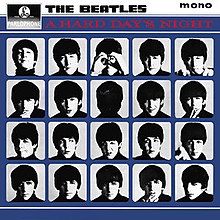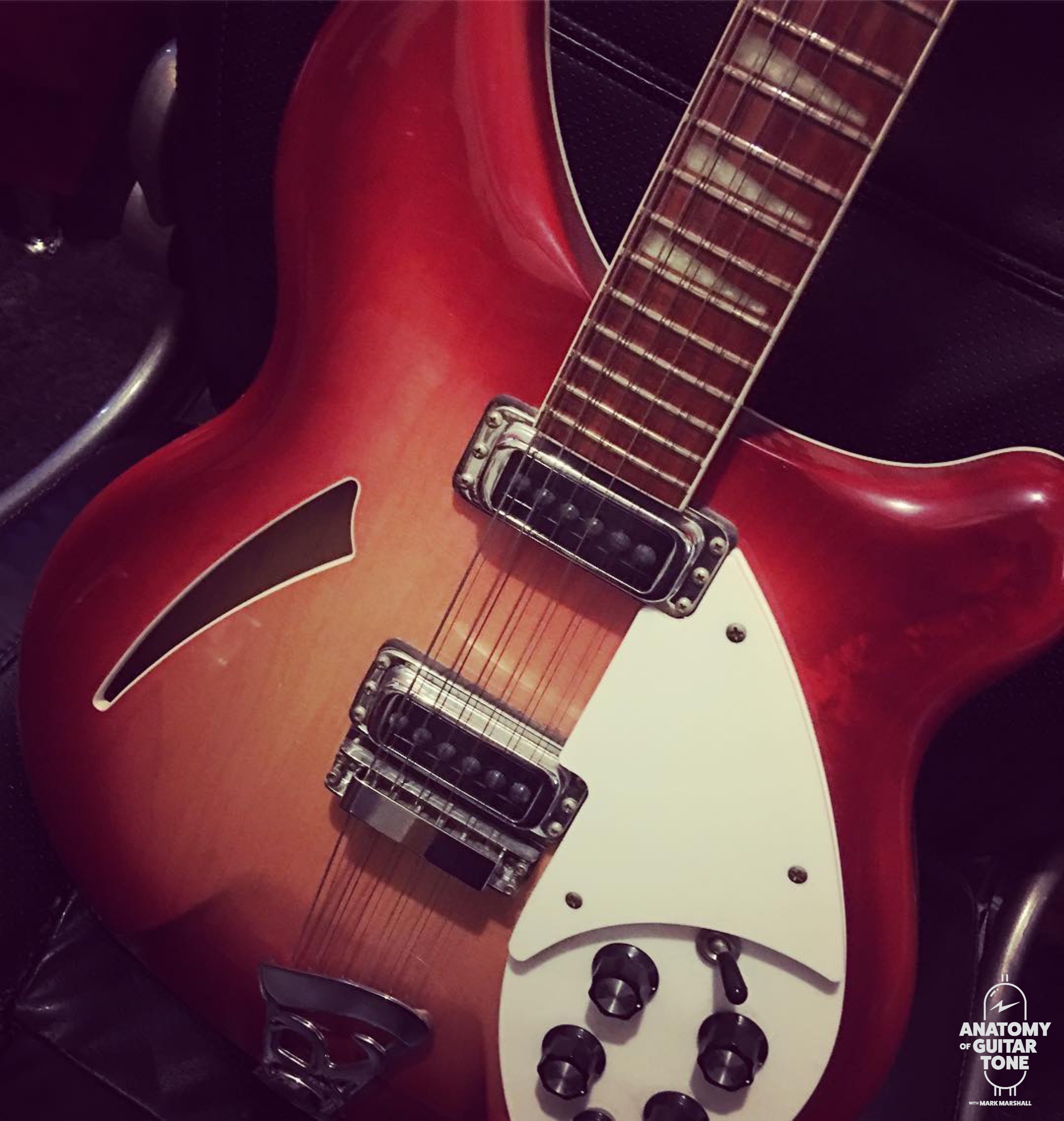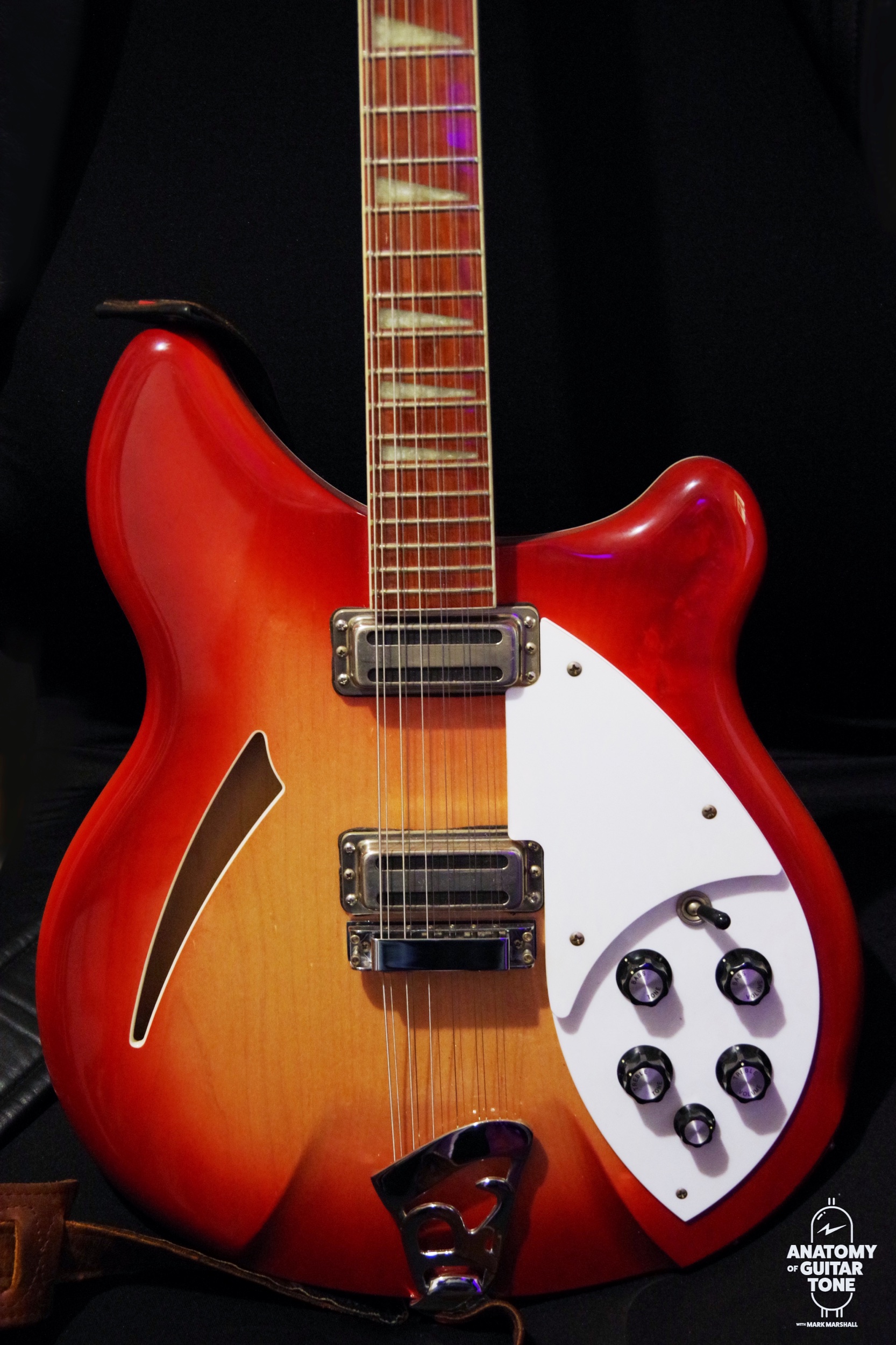Getting that vintage Rickenbacker 12 string tone
In 2001 I decided I wanted a Rickenbacker 12-string. It’s a sound I have long loved. I grew up listening to the Beatles. Tom Petty was also on the soundtrack to my childhood. How could a guitar collection that’s supposed to represent my influences not include a Rickenbacker 360/12?
They're not the easiest guitars to find. There is usually a waiting list for them. I called stores across three states. Nobody had the 360/12 Fireglo I wanted. And I had to have the Fireglo. Nothing but the “A Hard Day’s Night” guitar color would do.
I didn't understand nearly as much about guitars as I do now. I was green. I didn't know there was any difference between George Harrison’s 1963 360/12 and the Standard 360/12 that Rickenbacker was producing in 2001. I knew the body shapes were slightly different. I also noticed the pickups looked a little different—but I had no idea how important this would be.
Delivery Day
When my Ric arrived (I ordered it through a catalog), I was excited to open the case and plug it in. Within my first week of owning it, I found it a hard to interface with my amps and pedals. I had to make a lot of changes when I plugged it in. It was a rather dark guitar. It didn't have a lot of presence.
George Harrison Playing a 1963 Rickenbacker 360 12 string
When it wasn’t it plugged it sounded nice. When plugged in, not so much. I thought that maybe I didn't know what I was doing. It had to be user error. I kept trying. It just didn't sound like “Help!" or “If I Needed Someone.” I found it nearly impossible to use in live applications.
In the studio I could add lots of EQ and compression to try to get some life out of it. Live, I would almost need a different signal chain. Or I would have to reach over to my amp and make radical charges. Something I'm not fond of doing in the middle of a show. It wasn’t until over a decade later that I plugged my 360/12 into a Vox amp. This was a substantially better pairing than anything else I’d tried.
But was that it? The Byrds didn’t use Vox amps and they sounded great. In fact, Roger McGuinn later used a Roland Jazz Chorus—a solid-state amp. I happen to own one. I tried it. But my 360/12 still had no life.
Roger McGuinn and his Rickenbacker 360 12 string
After years of frustration it was either research to find the root of the problem or sell it. I still wanted that classic Rickenbacker Beatles, Byrds, and Petty tone. So I dug deep into research. What happened next was a complete surprise that left me baffled in many ways. I've researched old guitars, amps, and pedals before but never experienced anything like what I was about to learn.
Private Eye
If you look hard enough, in my opinion, you can usually find what you need. But trying to find information on the wiring for a 1963 Rickenbacker 360 is like asking the government for the nuclear codes. I might as well have sent an email to the Pentagon saying, “Hey look, we all know something went down at Area 51. How about you just tell me?”
Because I never heard a word from Rickenbacker. That’s rare for a company in this day and age. Weeks went by. Not a peep. I'm sure I’m now on Rickenbacker’s bad list. I’m starting to feeling edgy walking the streets. Am I being followed? Should I meet my guitar tech in a well-lighted public space?
I couldn't find accurate wiring diagrams or clear pictures online The most informative website was Rick Resource.
Unearthed
What I found is that Rickenbacker once used 250k pots for its volume knobs and 500k pots for its tone and mixer knobs. Modern Rics use 300k pots all around.
“Rickenbacker once used 250k pots for its volume knobs and 500k pots for its tone and mixer knobs. ”
This results in a duller sound. Boring!! Its like going to a party where they serve vegan carrot cake. No offense to my vegan friends. I just happen to be picky about cake (chocolate please) and guitars.
Another valuable piece of information related to the capacitor on the original 1963 360/12 that George Harrison recorded those Beatles records with: It had a 0047 polyester cap connected to the bridge pickup.
Its purpose is to act as a high pass filter. Meaning it cuts off low end. It rolls off a lot of the frequencies below 250k. You can clearly hear this sound at the beginning of "If I Needed Someone.” You just can’t get that sound without the .0047 cap.
Rick eventually stopped equipping the 360/12 with the .0047 cap. For me, that cap is part of the Rickenbacker sound I love.
History Rewritten
What's also interesting is that Rickenbacker doesn't wire all of its re-issues period-correct. So you can buy a mid ’60s re-issue and it won’t sound like one. This baffles me. Why wouldn’t they want their guitars to have the sound that made them famous? Some models apparently are period-correct, at least to some degree. But it’s not made clear to the consumer.
“1963 Rickenbacker 360/12 had a polyester .0047 cap.”
Anyway, I knew I wanted the period-correct cap. I suppose I could have put any .0047 cap in there. But I'm way too particular for that. The originals caps were polyester. Not the easiest to find. It took a team to make this happen. Gino Maisano, an amp tech and pedal designer at Electro Harmonix, located some for me. These green polyester .0047 caps are often referred to as Chiclets. Like the gum. I wouldn't eat them though. I'm pretty sure there is nothing minty about the flavor.
It was impossible to find a correct schematic for a 1963 Rickenbacker 360/12 or 360 online. How is it that there is no diagram for the most famous model of their guitar? I’m still scratching my head. All the schematics I found were wrong, wrong, wrong.
A Relic Example
Factory repaired vintage Rickenbacker 360 12
A sidebar. I have a friend who owns a reissue1964 360/12. I bugged him to open up his Ric and snap some pics. He mentioned that its previous owner sent it back to Rickenbacker once for servicing. Guess what? Ric didn’t re-wire it period-correct. They used modern caps and didn't include the green .0047 cap. I believe they may have even replaced the original pots with 300k pots.
A reissue 1964 Rickenbacker 360 12
300k pots sound rather dull on Rics. With the mix and tone at 500k and the volume at 500k, the guitar sparkles. Which is exactly what you want a Rickenbacker 360/12 to do! Hello!!
It's interesting to me that the company that invented the guitar, and should have some interest in its history, would show such disregard for historical accuracy.
A Warning
Another sidebar: If you have a vintage guitar, don’t send it back to the factory. Find a highly skilled repair tech who specializes in vintage gear. He or she will know more about restoring your guitar than the factory.
Pickup Line
My Rickenbacker with the stock high gain pickups
Ok, let’s get back on track. A lot of modern Rics come with high-gain pickups. These first made their appearance in the late ’60s. I have not played any vintage Rics with original pickups, just the 2001 pickups that came in mine. Of all the pickups I’ve swapped out of my guitars,, these were the worst.
Here Come the Censors
Stock Rickenbacker high gain pickups
There really is nothing redeeming about these Ric pickups. I’ve tried to find something nice to say. But I was getting weak from exhaustion. I was seeing my friends less. I hadn't seen the sun in weeks. Ok, ya get it! I really don't like Rickenbacker high-gain pickups.
That's ‘cause they really do sound bad! Why? Why would they do this? Who is sitting at testing in the Rickenbacker factory, nodding their bobblehead in acceptance? Someone needs a hearing aid.
Drama
The difference between the stock Ric high-gain pickups and my new pickups were dramatic. Both the clarity and complexity of their harmonics are vastly different.
What were the new pickups? Farhad Soheili at FSC Guitars and Instruments connected me to Gemini Pickups. Its owner, Rob (who also hand makes and winds every pickup), is incredibly skilled at building old-style pickups. He can do them all.
I reached out to Rob and was quickly impressed. He really knows his stuff. I knew he could build them. And he did. What he built were the original pickups that came in George’s 1963 Rickenbacker as well as Roger McGuinn’s Ric: Toaster pickups.
Rye or Wheat
Tom Petty
They look like a toaster viewed from above. Toaster pickups are lower output than the Ric’s current high-output hockey pucks. (Take a deep breath, Mark). The lower output adds a lot of clarity to the tone. Just swapping the pickups alone sounded like a blanket was taken off my tone. All of a sudden, my Ric had a jangle.
There was also more complexity to its harmonic overtones. The stock pickups were like processed white bread that needs lots of jelly to taste good. Gemini Pickups’ Toasters are rich and need no enhancement.
I don't believe Rickenbacker meant to use the cheapest parts. I think it’s just out-of-touch decision making. The guitar is built really well. Just some bad-taste electronics.
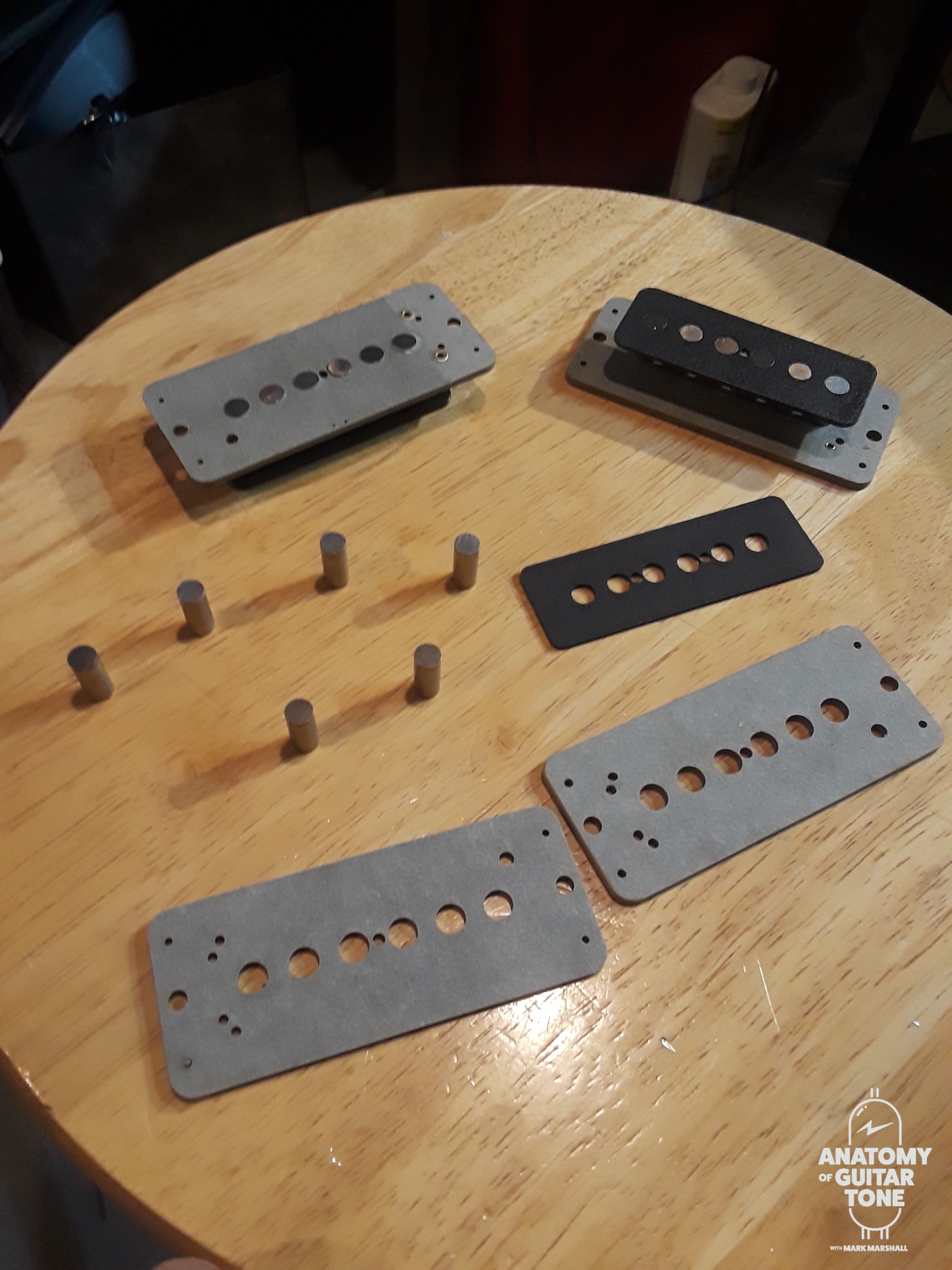
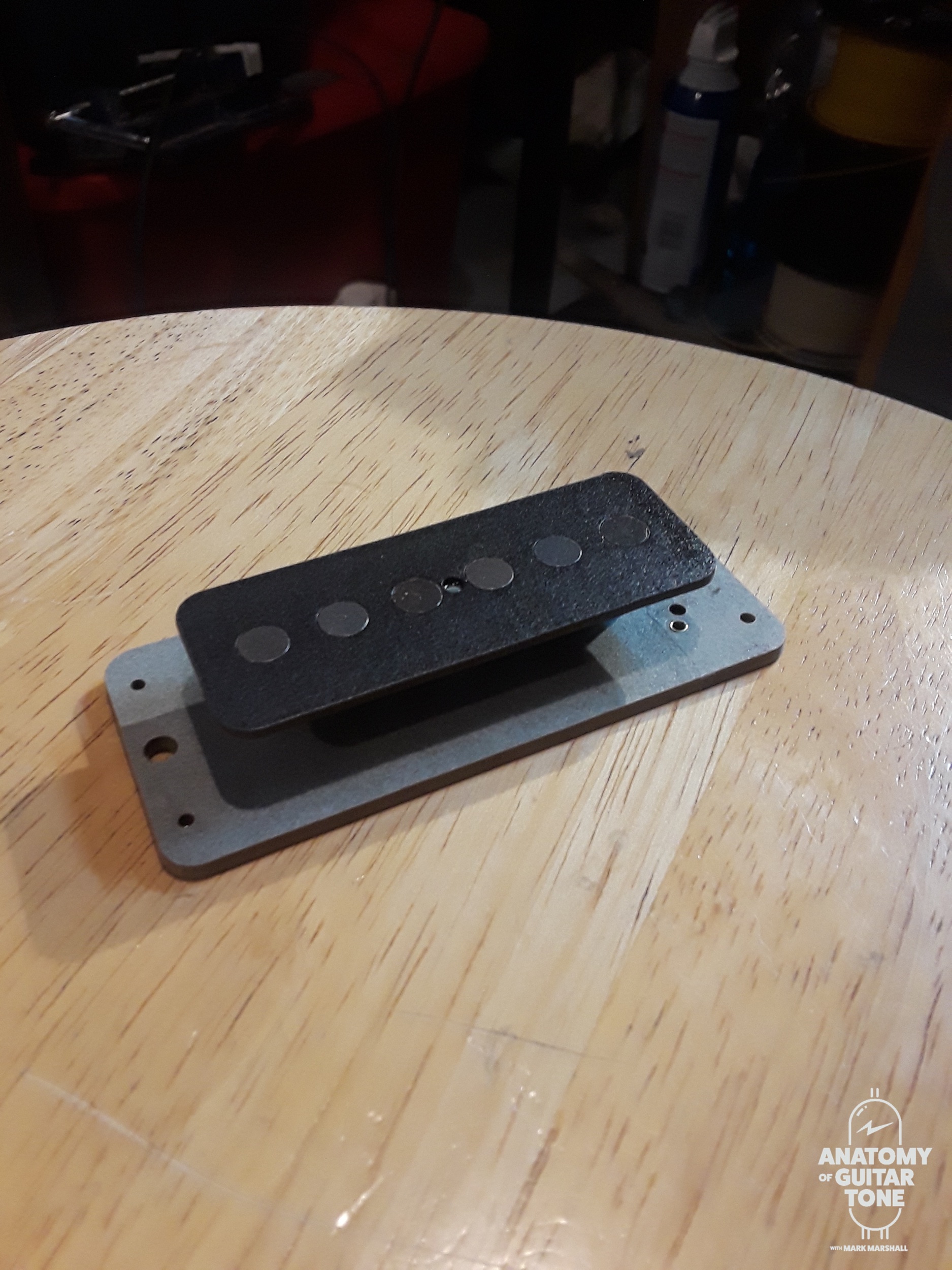
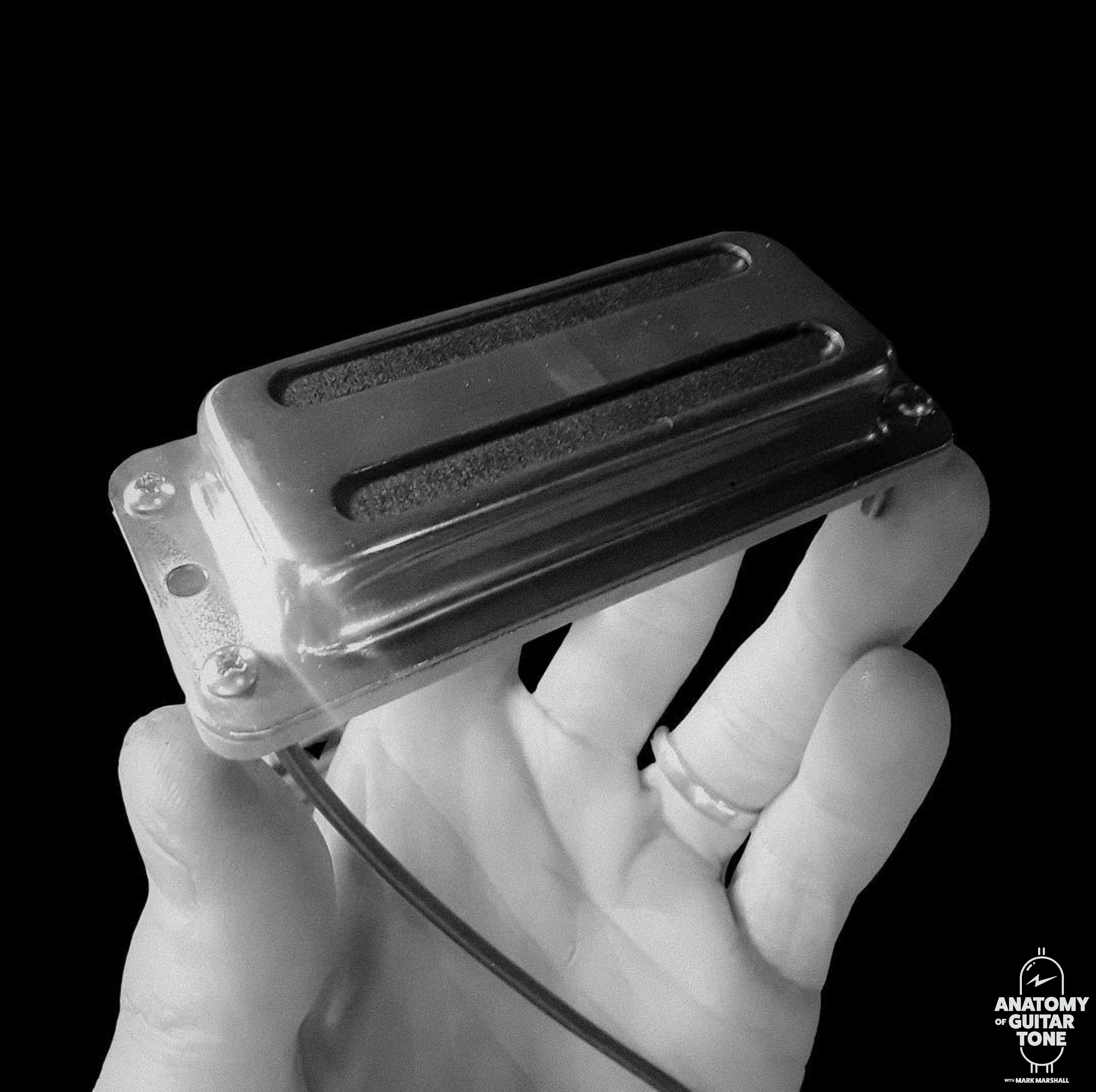
A Jump, Skip and a Hop
I guess I jumped ahead there. How about the wiring?
I took my Ric 360/12 to Matt Brewster at 30th Street Guitars. Matt has been in the business for years. Owning a guitar shop in NYC means he has seen and repaired pretty much every guitar there is. He's a master.
That doesn't mean it was easy for him. He was having difficulty locating info, too. And even though every guitar has passed through his shop, you don't often see a mint 1963 Ric 360/12.
I got a call from Matt at 7pm on a Saturday night asking me to confirm what I wanted. My first thought was, “Matt, it's Saturday night. Why are you still at the shop?” He told me later that he wanted to be alone when he wired it, with no distractions. Even the master himself needed to concentrate. Not because it was physically hard to wire. But because it was so tough to figure out.
30th Street Guitars in Manhattan
Matt had a great suggestion. Why not place a push-pull pot in the treble tone position? When the pot is pulled up, the green .0047 cap is in the circuit. When pushed down, the cap is out of the signal. This was a great idea. I can pull up for the “A Hard Day’s Night” tone or push down for a more modern sound.
Matt got the idea from the 4003 bass, which also has a .0047 cap and a push pull pot. Seems pretty obvious with a bass, as you wouldn't always want the high pass cap in the signal.
Why doesn't Rickenbacker just follow Matt’s cue on its vintage reissues or even on the standard 360/12? Hello? Is anybody home?!
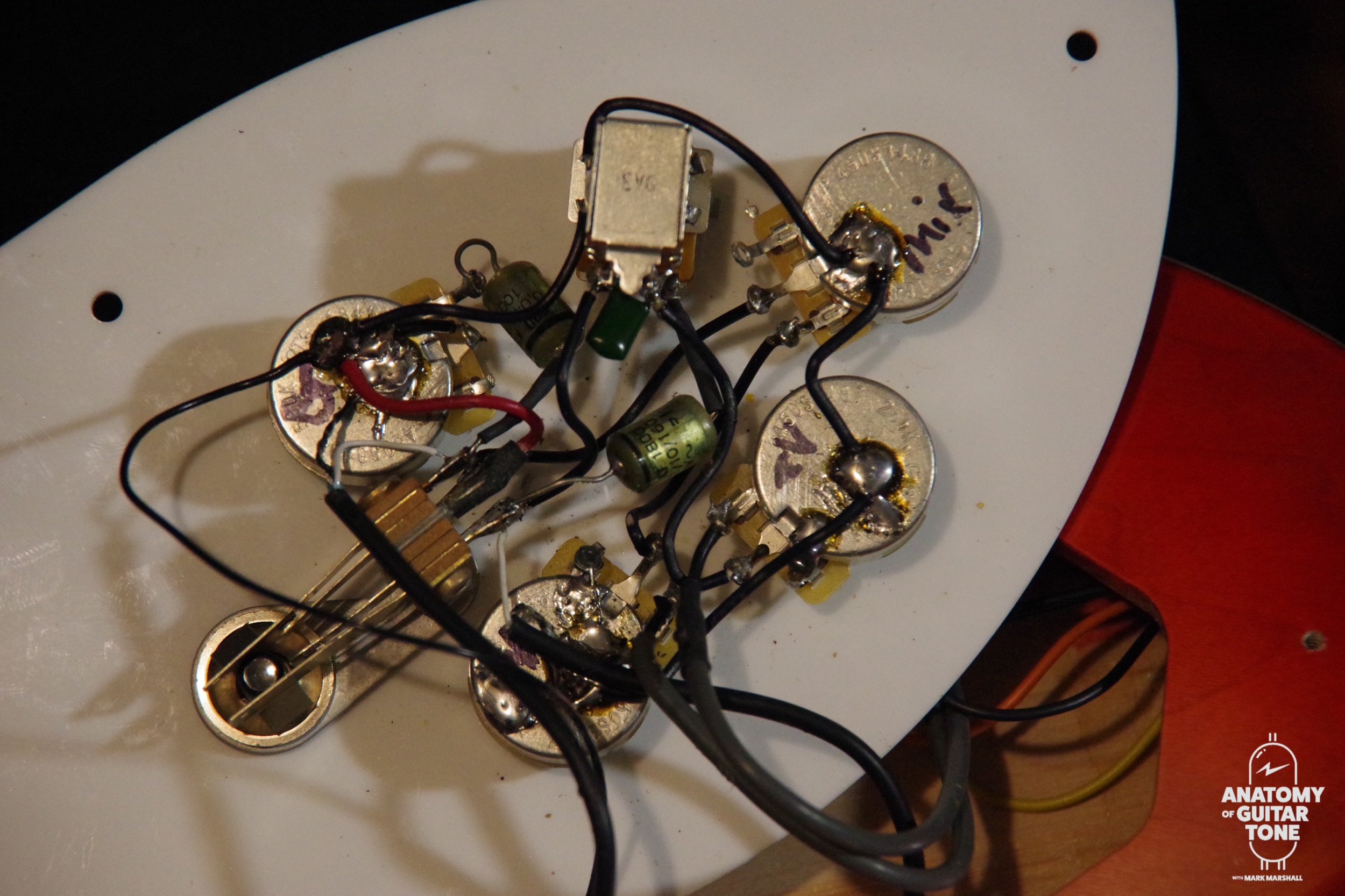
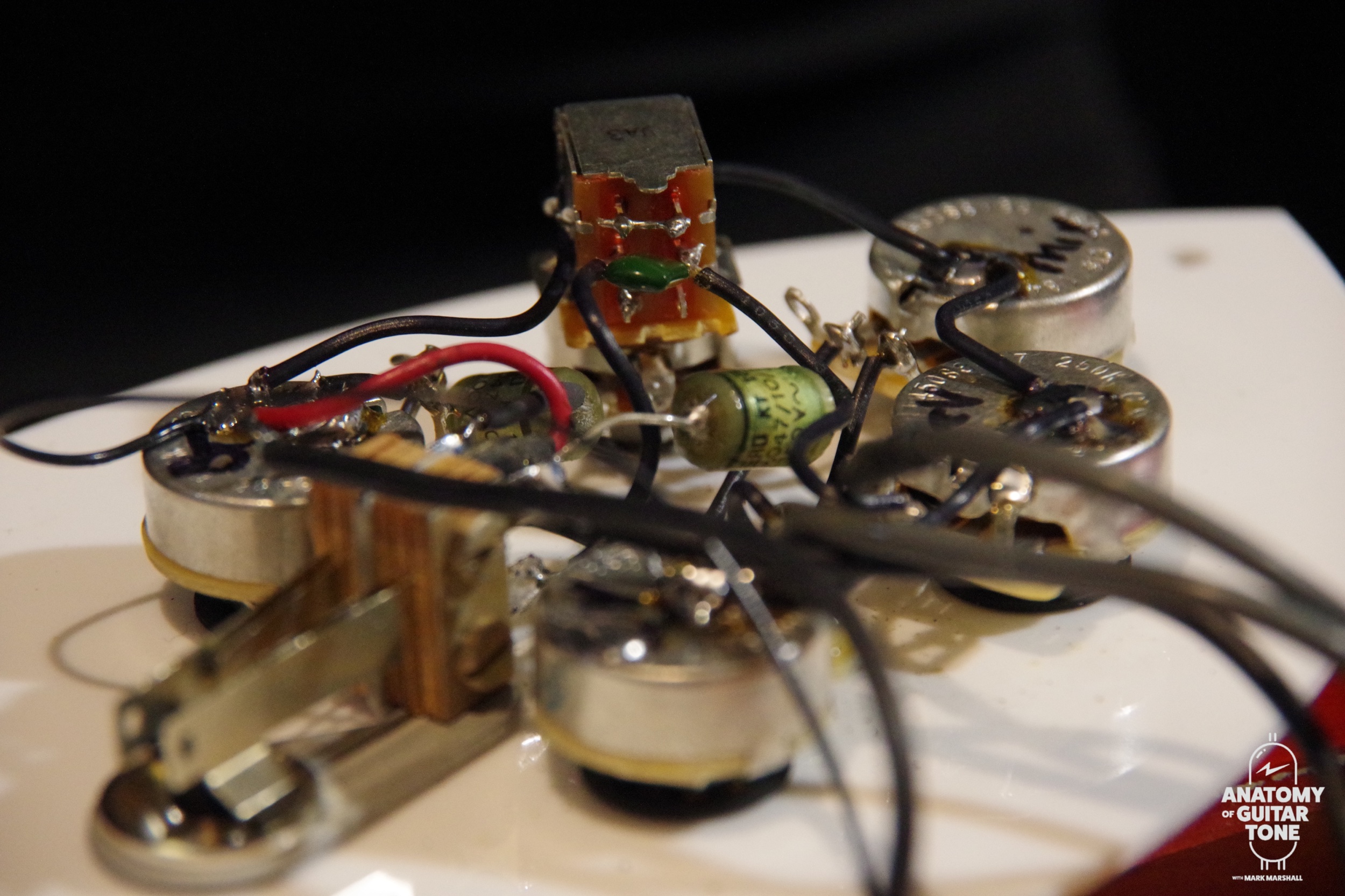
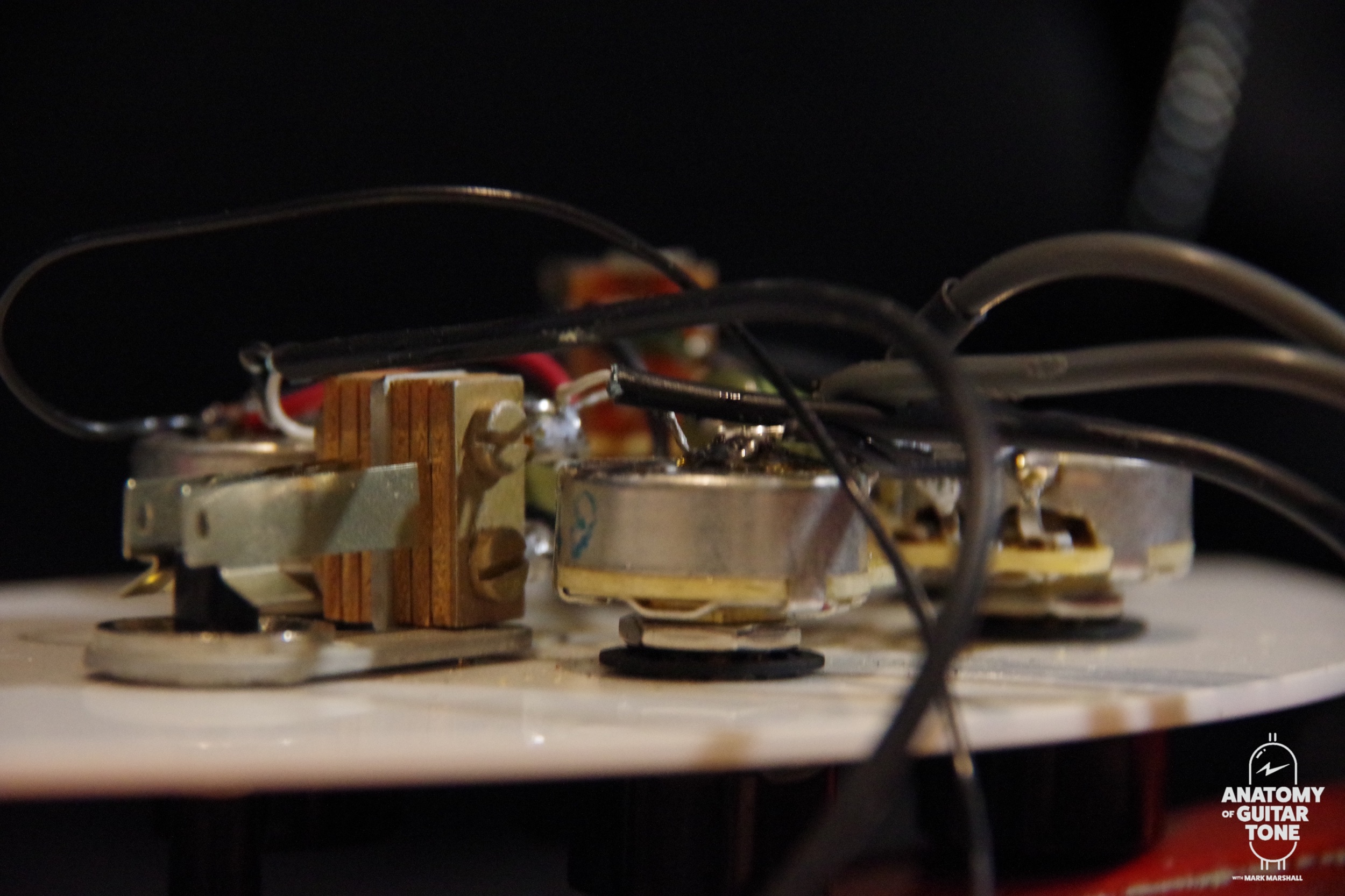
Stereo
Ric O Sound stereo jacks
Rickenbacker 360s are stereo guitars. You can actual split the pickups to different amps. It’s called Ric-O-Sound. The idea is you can get a really wide sound by sending each pickup to an amp with its own EQ and effects.
I’ve never tried this. It’s a subject for another blogpost. I may even dig into the various ways you can process each signal. Hmmm...
The stereo wiring alone is likely to baffle any tech who opens up a 360. This is highly unusual wiring.
A Road Map
The best I could find is this blurry diagram. I believe it’s the only one that exists. I wrote the values for each component on the image, which does have the correct wiring.
Correct wiring for a 1963 Rickenbacker 360/12 with the addition of a push pull pot
Grocery Shopping
Here’s a list of parts required to vintage-ify a Rickenbacker 360/12:
2 x 250k pots for the volume knob.
Parts for Rickenbacker wiring restoration
2 x 500k pots (1 for rhythm tone, the other for the mix knob).
I x 500k push-pull pot for the lead tone knob.
2 x .047 caps (I upgraded the stock caps to better NOS caps. They make a difference).
I x .0047 polyester green cap for high pass
2 x Gemini Toaster pickups (wired to 60’s specs):
“1/4" alnico 5 rod magnets
2001 Rickenbacker 360/12 with Gemini Toaster pickups and vintage wiring
44 AWG wire
Scatter-wound 100% by hand
Bridge output: 7.5k
Neck output: 6.8k
Proof Is in the Pudding
Let’s listen:
The 5th Knob on a Rickenbacker
Now let’s listen to how the mix knob works on a Rickenbacker. The fifth “mix” knob confuses a lot of people. Think of it as a blend knob for the bridge and neck pickup. It varies from blending the volume knobs on a Gibson.
Anyone who has spent some time with a humbucker-equipped Gibson has noticed that in the middle position there’s a point where if you roll back one of the pickup volumes, the guitar goes silent.
This fifth mix knob allows you to fully blend the bridge pickup in or out.
Let’s listen:
Let’s hear the Ric with a pedal compressor. Here are some examples of pairing the modded Rickenbacker 360/12 and the Analog Man CompROSSor with the RYCK mod.
The RYCK mod allows more treble to pass through the compressor, retaining the Rickenbacker chime. A lot of compressors will dull your tone, but not this one. It’s a great match for any Rickenbacker.
2001 Rickenbacker 360/12 with Gemini Toaster pickups and vintage wiring
Let’s hear what it sounds like heavily compressed:
Analog Man CompROSSor with RYCK mod
My friend Jason Loughlin made a great video using his Rickenbacker loaded with Gemini 60’s spec Toasters.



